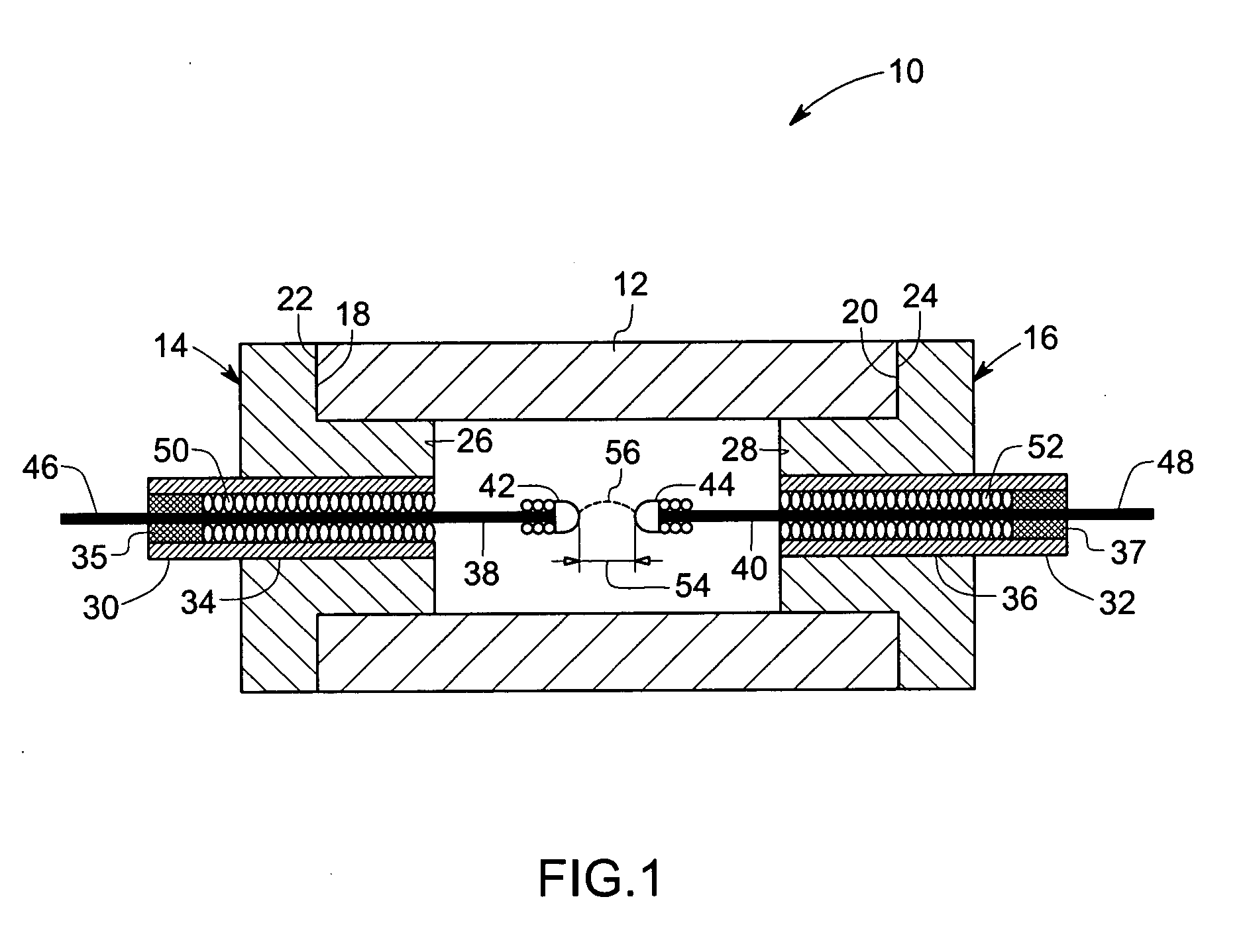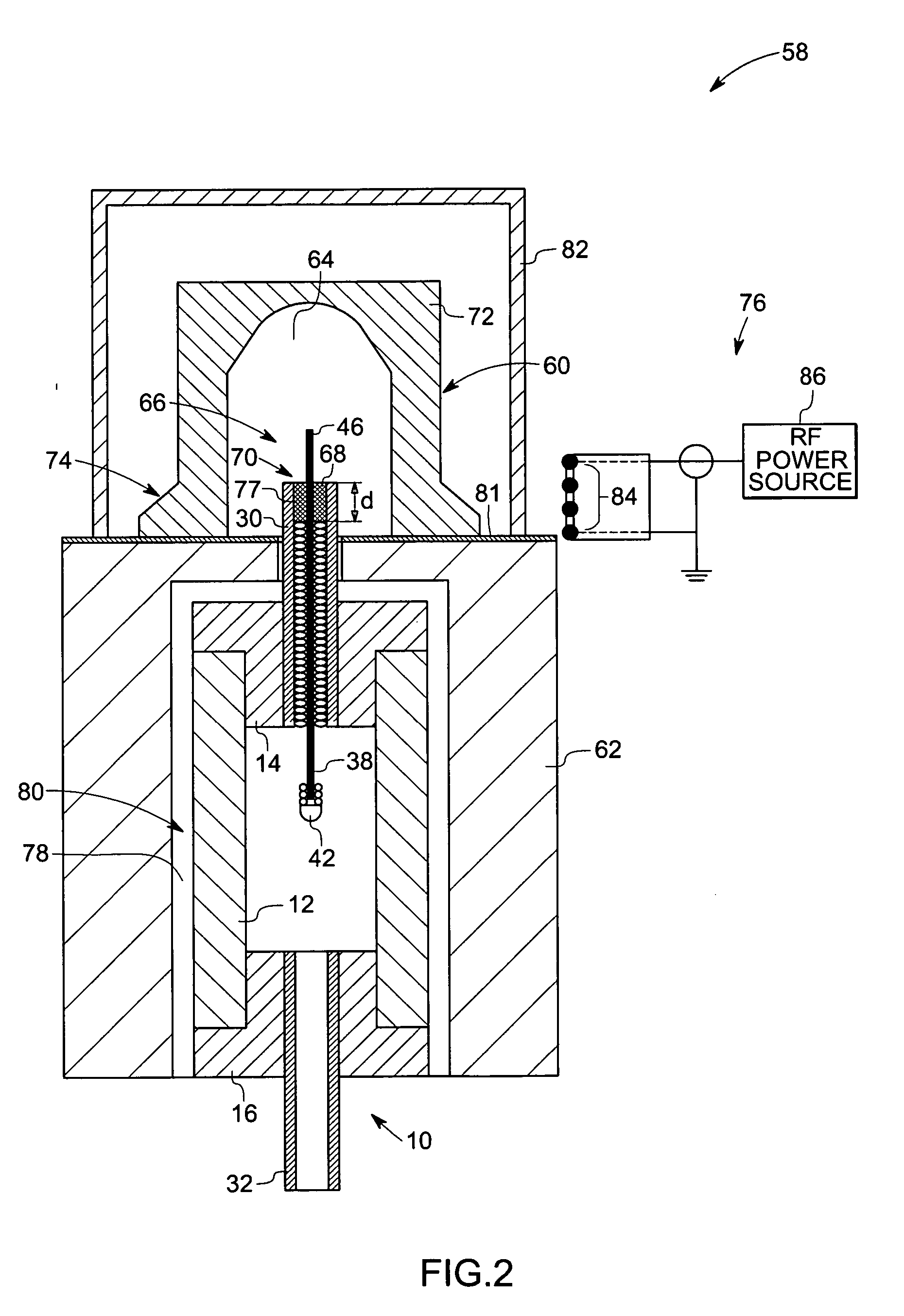System and method for sealing high intensity discharge lamps
a technology of high-intensity discharge and sealing cracks, which is applied in the field of lighting systems, can solve the problems of residual potential stresses and sealing cracks, and various stresses due to the sealing process
- Summary
- Abstract
- Description
- Claims
- Application Information
AI Technical Summary
Problems solved by technology
Method used
Image
Examples
Embodiment Construction
[0028] Aspects of the present technique provide unique sealing systems and methods for sealing between a wide variety of lamp components at high temperatures, for example, by providing localized heating and a high temperature gradient in the sealing region. Localized heating and a high temperature gradient minimize thermal stress in the components being sealed and substantially reduce or prevent cracking during heat-up, sealing, and cool-down stages of the sealing operation. Moreover, localized heating also aids retention of a lamp dose during the sealing operation. A high temperature gradient provides desirable microstructure control for both crystalline and glass phases of the seal. The unique features introduced above are described with respect to several exemplary embodiments of the present technique illustrated hereinafter.
[0029] Turning now to the drawings, FIG. 1 is a cross sectional view of an exemplary lamp 10 wherein aspects of the present technique are applicable. As ill...
PUM
 Login to View More
Login to View More Abstract
Description
Claims
Application Information
 Login to View More
Login to View More - R&D
- Intellectual Property
- Life Sciences
- Materials
- Tech Scout
- Unparalleled Data Quality
- Higher Quality Content
- 60% Fewer Hallucinations
Browse by: Latest US Patents, China's latest patents, Technical Efficacy Thesaurus, Application Domain, Technology Topic, Popular Technical Reports.
© 2025 PatSnap. All rights reserved.Legal|Privacy policy|Modern Slavery Act Transparency Statement|Sitemap|About US| Contact US: help@patsnap.com



